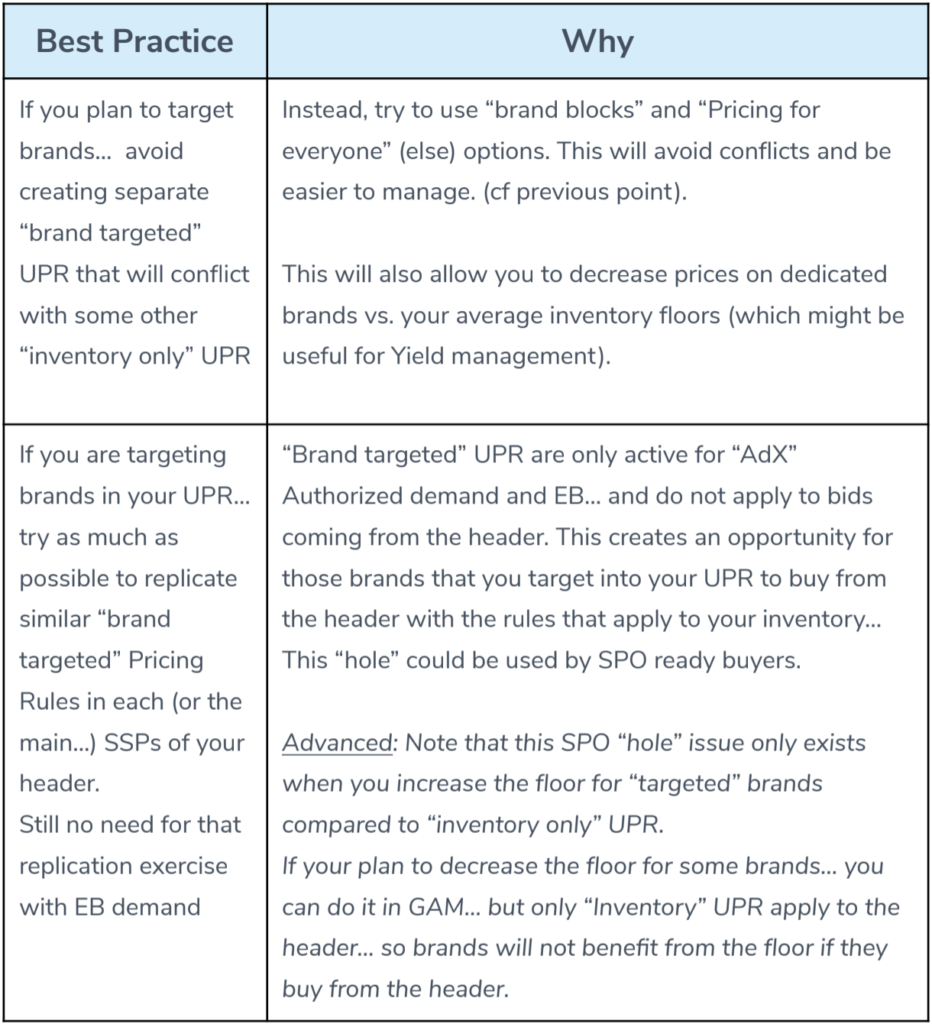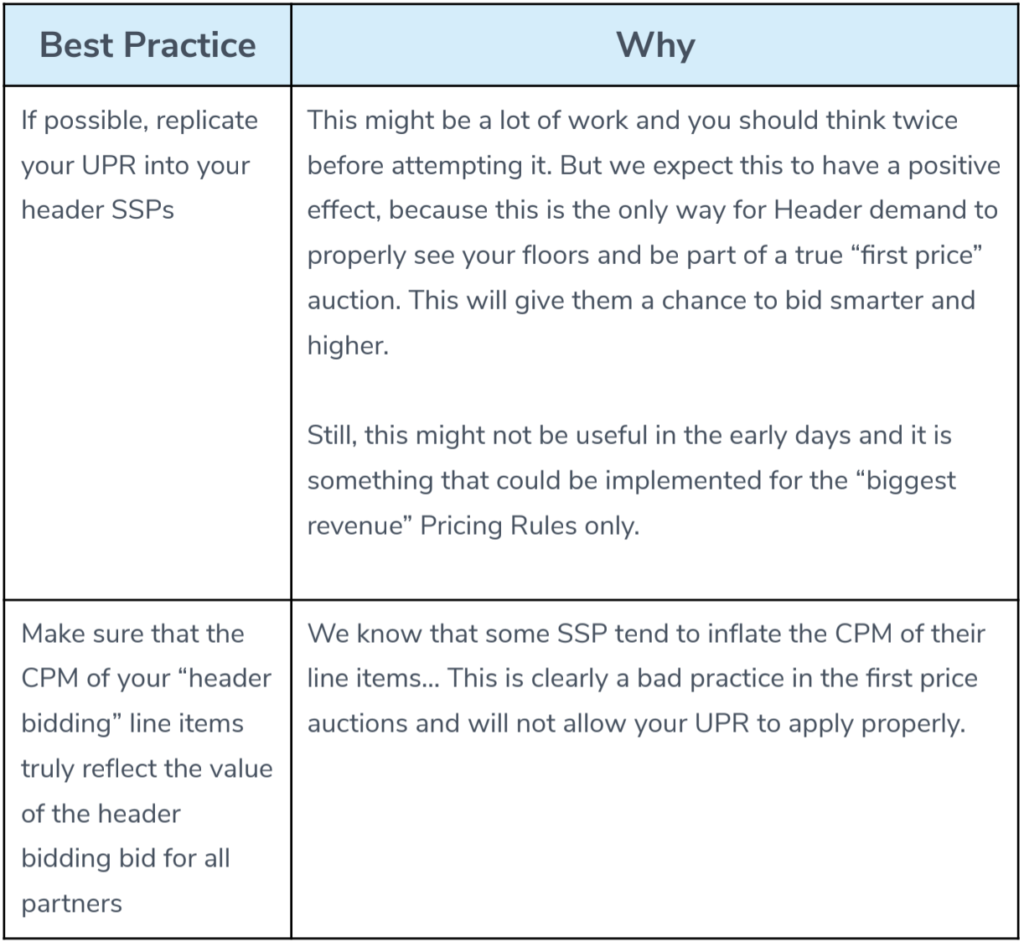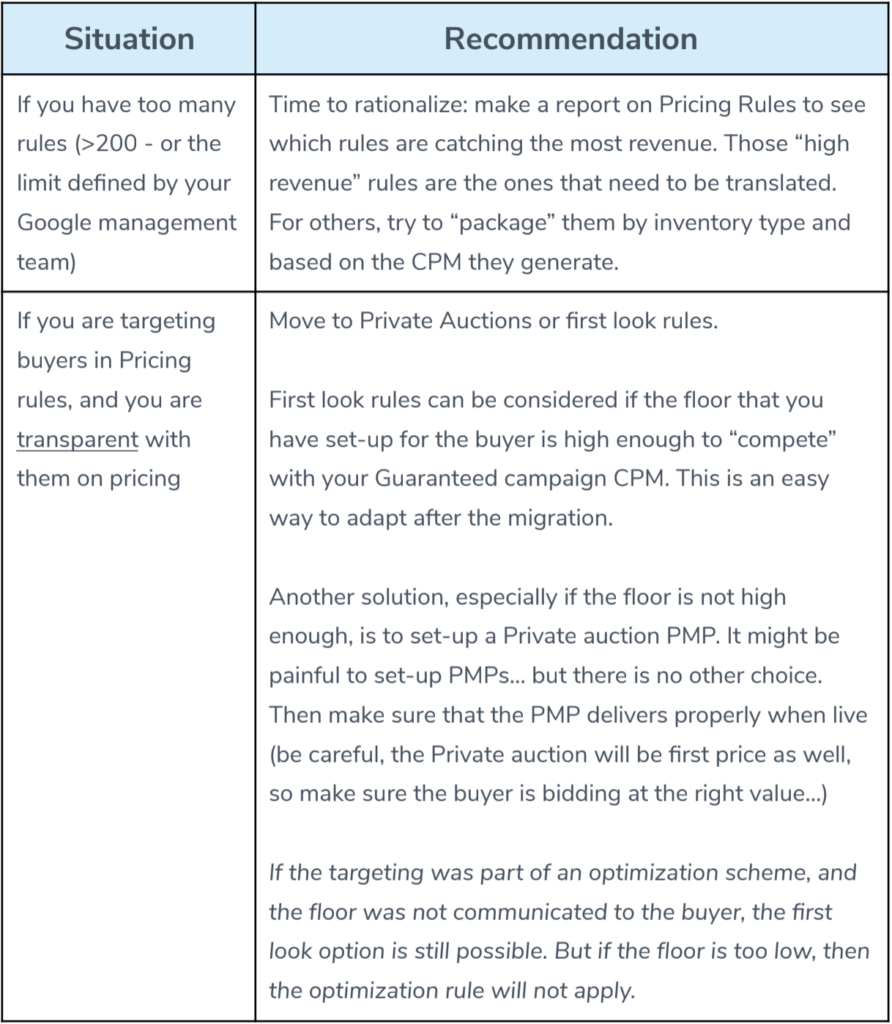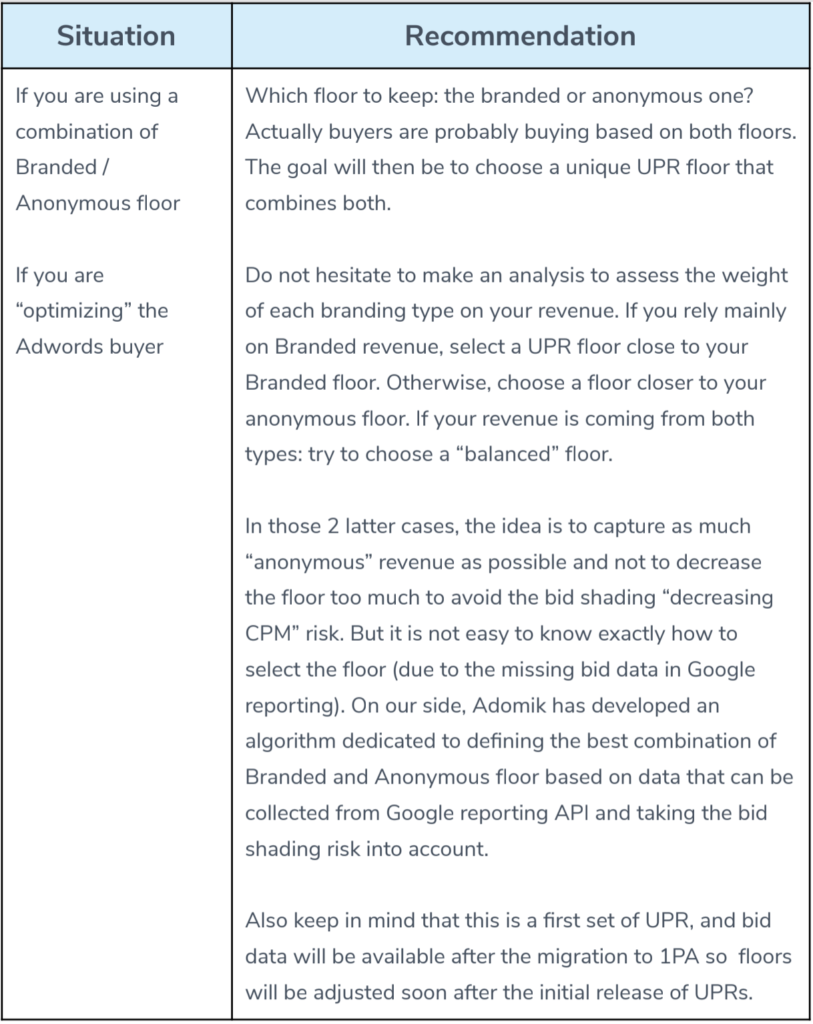(Part 3 of a 3 part series on Best Practices for Unified Pricing Rules) – Go to Part 1 or Part 2
This blog series aims to guide you through the migration from Pricing to Unified Pricing Rules, and also help you keep control of your revenue after the transition. You can also download the complete white paper with the three articles by clicking below:
How to Translate your Pricing Rules Into UPR
Unified Pricing Rules Translation Policy
Adomik has worked on dedicated processes & tools to translate your Pricing Rules into Unified Pricing Rules. These take into account the following best practices. Feel free to apply them for your own translation.



These are basic best practices, but there are also situations that are more complex to manage. These are listed in the following section.
Complex Situations




What to Do After The Migration to First Price Auctions?
After the migration to 1st price, when Unified Pricing Rules start to apply to your whole traffic, our 3 recommendations are: analyze, analyze and… analyze 🙂 .
And more specifically, in the short term:
- Use the new (to be released in August, 2019) Google tools to analyze Bid data in order to understand where buyers are bidding and start to adapt.
Try specifically to understand if buyers are decreasing their bids and CPM over time based on the value of your floors, if some of their campaigns stop buying on your inventory, if SPO is generating visible impacts… - When you get a clear picture… start to adjust your floors:
Test floor increases where you see that bids are going down. Decrease floors where you see significant campaigns are cut off.
Additionally, it might be useful to increase floors if they are too low compared to bids… to avoid “future” bid shading.
You can also decrease your floors when you see high volumes of bids below the floor value… but beware of bid shading. Buyers might decrease their bids and your CPM will drop….
Note that Adomik has developed a methodology and tools to analyse and simulate the behavior of buyers, to predict the impact of a change of floor and compare your results to other Publishers on the market. Those tools are integrated into the Price product to help you optimize your UPR.
(Part 3 of a 3 part series on Best Practices for Unified Pricing Rules) – Go to Part 1 or Part 2

